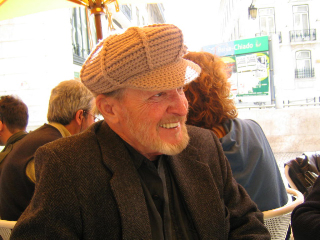 "Shane" left a comment on a previous post about a recently published paper by David Heeger's group.
"Shane" left a comment on a previous post about a recently published paper by David Heeger's group.I have heard about this paper, but haven't had a chance to read it yet. Here is the abstract for a quick summary:
How similar are the representations of executed and observed hand movements in the human brain? We used functional magnetic resonance imaging (fMRI) and multivariate pattern classification analysis to compare spatial distributions of cortical activity in response to several observed and executed movements. Subjects played the rock-paper-scissors game against a videotaped opponent, freely choosing their movement on each trial and observing the opponent's hand movement after a short delay. The identities of executed movements were correctly classified from fMRI responses in several areas of motor cortex, observed movements were classified from responses in visual cortex, and both observed and executed movements were classified from responses in either left or right anterior intraparietal sulcus (aIPS). We interpret above chance classification as evidence for reproducible, distributed patterns of cortical activity that were unique for execution and/or observation of each movement. Responses in aIPS enabled accurate classification of movement identity within each modality (visual or motor), but did not enable accurate classification across modalities (i.e., decoding observed movements from a classifier trained on executed movements and vice versa). These results support theories regarding the central role of aIPS in the perception and execution of movements. However, the spatial pattern of activity for a particular observed movement was distinctly different from that for the same movement when executed, suggesting that observed and executed movements are mostly represented by distinctly different subpopulations of neurons in aIPS.(Italics added.)
So this is an anti-mirror neuron paper. While I'm fully on-board with the anti-mirror neuron conclusion, I'm not sure the data really support this view. Again, I haven't yet read the paper and am basing my argument on the abstract only, so somebody correct me if I'm missing something. The study found that aIPS activated both for action production and action viewing. No surprise there. The interesting and novel contribution of this paper is that within the activated region, they found different patterns of activation for observation and execution of movements. From this they conclude that the these two functions are supported by distinctly different subpopulations of neurons.
I like the methodology employed here, and I believe their findings do indicate that observation and execution involve non-identical populations of neurons, but I don't think this is strong evidence against a mirror neuron view. Here's why: Suppose there are three types of cells in aIPS:
1. sensory-only cells
2. motor-only cells
3. sensory-motor cells (mirror neurons)
There is evidence for this kind of distribution of cells in parietal sensory-motor areas. Suppose further that action understanding is achieved by cell type #3, the mirror neurons. If this were true, the ROI as a whole would activate for both action observation and action execution, as the study found, but sensory vs. motor events would nonetheless activate non-identical populations of cells within the ROI: observation would activate cell types 1 & 3, whereas execution would activate cell types 2 & 3. This difference may be enough to allow for above chance pattern classification that is based on non-mirror neurons within the ROI.
So if I've got the basics of the study correct (based on the abstract), this is not strong evidence against mirror neurons supporting action understanding. Neither is it evidence FOR mirror neurons, however.
I. Dinstein, J. L. Gardner, M. Jazayeri, D. J. Heeger (2008). Executed and Observed Movements Have Different Distributed Representations in Human aIPS Journal of Neuroscience, 28 (44), 11231-11239 DOI: 10.1523/JNEUROSCI.3585-08.2008








